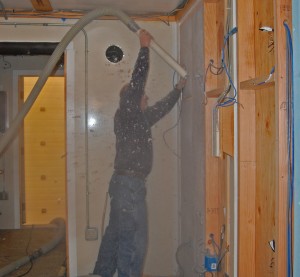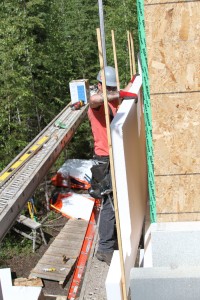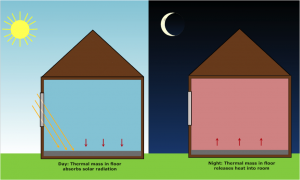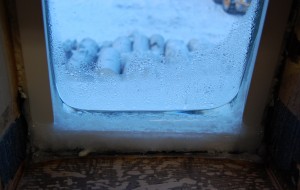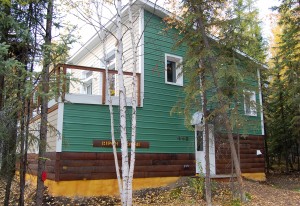Pellet stoves are similar to wood stoves, except they burn manufactured pellets instead of cordwood. Pellet stoves typically use electricity because they are partially automated: An auger moves pellets from a hopper to a combustion chamber, an exhaust fan vents combustion gases and draws in fresh air, and a circulating fan forces air through a heat exchanger and into a room. The stoves also can be controlled by a thermostat.
Pellets are about a half-inch long and are made from compacted sawdust, wood chips and waste paper (they resemble rabbit feed). They can be made from biomass fuels other than wood, including nutshells, corn kernels, agricultural crop waste, sunflowers and soybeans. They are bound together by pressure and heat (no glue is used). Pellets are sold in 40-pound bags at local hardware stores, or you can buy them by the ton from a manufacturer.
Many homeowners store pellets near the appliance because the hopper needs to be filled occasionally by either the homeowner or through a separate automated system. For small appliances only used occasionally, you may only need a few bags on hand, but bigger or more frequently used appliances will need a greater pellet supply. Below are a few guidelines to follow for storing pellets:
1. Ideally, pellets should be stored near the pellet-burning appliance for convenience. The pellet storage location must be accessible for re-stocking as well. If you have pellets delivered, call the manufacturer to make sure a delivery truck can access the site.
2. Pellets must be kept dry so they don’t crumble, ideally stored in an area with a roof and walls. If stored on the ground, they can absorb moisture from wet soil.
3. Since they will be burned in an appliance, they should be kept as clean as possible — protected from dust and other contaminants. On that note, delivery trucks that blow pellets into a storage area can cause lots of dust, so the room should be sealed off from the interior of a home.
4. In Alaska, pellet delivery trucks typically use a direct auger system to transfer pellets into a storage system. If you order pellets from a manufacturer, ask how they will be transferred to the storage area and protect any fixtures, lights or pipes that could be damaged. Make sure the storage area can support the weight of the pellets.
5. Finally, the storage area should have ventilation and a carbon monoxide (CO) detector near the door, as pellets can release CO when stored. Another option to alleviate CO concerns is to store pellets in a silo (inaccessible to people entering it) outside of the occupied building, with an auger feed system into the pellet appliance hopper and a CO detector near the
hopper.
This last point is important because CO is a clear, odorless, and tasteless gas that prevents red blood cells from carrying oxygen. It is extremely dangerous because people cannot detect it. Typically, CO is associated with burning fuel in a combustion appliance, such as wood, pellet, oil or natural gas furnaces and boilers. CO can enter a home if a combustion appliance backdrafts, releasing combustion gases into a home instead of up the chimney.
Stored pellets can release CO, according to recent studies, though the amount depends on several factors, such as the age, content and exposed area of the pellets. This is especially a concern for enclosed storage areas that contain large quantities of pellets and are accessible to humans, such as for district heating systems or on cargo ships.
Not all pellets release measurable amounts of CO. Preliminary testing at CCHRC found no detectable CO emissions when the pellets were stored in a 30°F storeroom. Although when we sampled a plastic bag filled with pellets, sitting inside an 85°F room, the CO concentration in the bag was 60 parts per million (70ppm would trigger CO alarm if sustained for 1 hour). While the room may not have reached the same level as the bag (as the gas would have more space to diffuse), this shows the pellets have the potential to produce CO.
Be sure to take the proper precautions for a pellet storage area by ensuring the area is vented, installing a CO detector near the storage area, and being aware of the symptoms of CO poisoning. All homes with any kind of combustion appliance should have a CO detector in the living area to ensure combustion gases are not entering the home.


